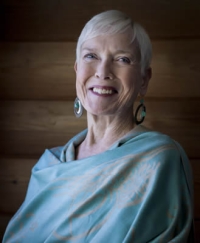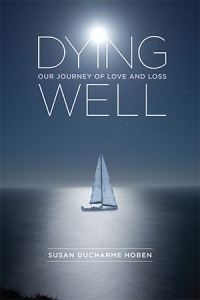Too many Americans fail to plan for end-of-life care
John McCain has not announced a decision to stop treatment for his brain tumor, but his public actions indicate that he has transitioned from “being sick” and hoping for a cure, to “dying” and hoping for the best possible quality of life in the time remaining.
He has completed his final book, “The Restless Wave.” He has planned his funeral and asked people to eulogize him. He is openly gathering friends and colleagues to his ranch to say goodbye, share memories and pass on wisdoms. When he does die, especially coming so soon after First Lady Barbara Bush openly stopping treatment in favor of comfort care, there will be a rare opportunity for us, as a society and as individuals, to benefit from the experiences of these courageous public figures and further the growing national dialogue about how we die.
We as a society have not come to terms with dying as a natural part of living. The technological capabilities of medicine have outstripped the moral capacity to distinguish what can be done versus what should be done. This results in end-of-life care that is often aggressive, expensive and not aligned with patient preferences. Far too many of us die in hospitals, in pain, isolated from their friends and families. These statistics make clear the scope of our problem:
● Although 90 percent of those on Medicare say they want end-of-life care at home, only one-third achieve it.
● Twenty-five percent of all Medicare spending is for patients who are in their final year of life, most of that money spent in their last couple of months for care which is often of little apparent benefit.
● The default standard of care is “all necessary care.” This standard of heightened levels of care contributes to the estimated $810 billion in unnecessary, unbeneficial, or wasteful care provided to Medicare beneficiaries who spend most of their Medicare dollars in the last year of life.
● Despite overwhelming conformity when it comes to what Americans claim is important to them at the end of their life, patients do not always receive the level of care they desire. Among those seniors who have taken the time to spell out for their physicians how they envision their final days, only 2 percent of respondents requested “all possible care.”
● A study of patients who understood themselves to be terminally ill with advanced cancers found that only 17 percent of respondents expressed interest in “life extending treatment.” Instead, most patients valued quality of life over extending it.
There are institutional changes required to improve end-of-life care, i.e., restructuring the U.S. payment system and policies to support palliative care provision and updating medical school curriculum to educate clinicians about end-of-life care. These are necessary components of a long-term solution but institutions are slow to change.
In the meantime there are personal barriers to dying well, largely fueled by fear and lack of information, which can be addressed now. Failure to plan ahead makes it difficult, if not impossible, to achieve end-of-life goals. However, there are tools available to help us think through choices, and documents, as well, such as an advance directive or living will, on what we want at end-of-life.
There are excellent books that educate readers about the process of dying, palliative treatments that are available and the many services that hospice provides. Family members and loved ones can play a key role as a health care proxy. Healthcare organizations at all levels should commit to investing as much on campaigns targeted at improving communication about advance-care planning and increasing public information/participation in end-of-life care as they do for campaigns on healthy eating, exercise and screenings.
Without action many of us will never achieve the closure that Sen. McCain is surely working toward, and grieving family members will be left with heart-wrenching tales full of tears, anger, regret and loneliness.

